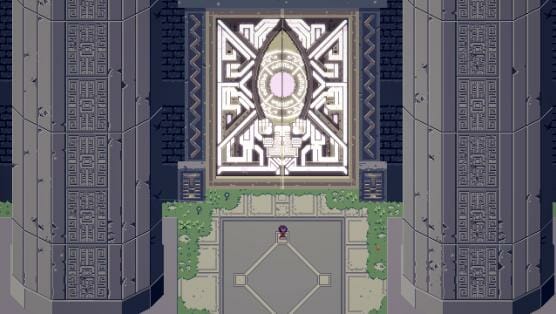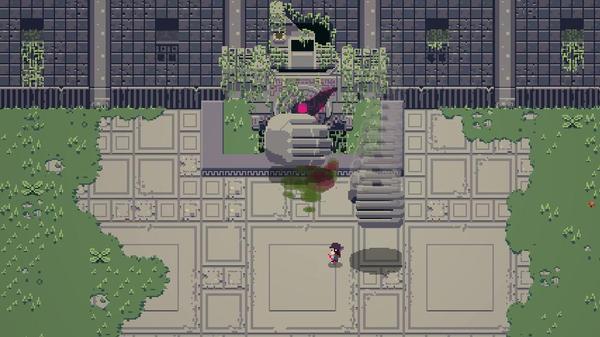Titan Souls: The Advantage of Efficiency

Titan Souls might be needling a couple of recent hits with its name, but its inspirations are far older than Titanfall or Dark Souls. The Ludum Dare winner leans on the 1980s, visually recalling old adventures like the original Legend of Zelda and Ys. If the retro aesthetic wasn’t so thoroughly a part of independent game culture, you’d maybe think you were playing something from the NES or Master System.
The game has a hook beyond its classical appearance, though. Titan Souls strips the Zelda model down to its rudiments, eliminating all power-ups and all enemies other than bosses. It even does away with health bars, simplifying all combat down to single hits. Your character has one hit point. The monsters you face have one hit point. Your only weapon is an arrow that has to be charged up and then retrieved after it’s fired. Whoever lands the first blow wins, you with your single arrow and them with their convoluted but heavily choreographed attack patterns. And that’s it. You don’t get new weapons. You don’t use items. You don’t get stronger. You can’t even jump, restricted to walking, rolling or running. You kill a thing, pull your arrow out of its corpse and move on to the next thing to kill.
These things aren’t easy to kill, of course. If they were this wouldn’t be much of a game. They are much larger than you, have larger and more varied weapons, and can usually move much faster than you. As in almost any boss battle, the goal is to crack their pattern and know exactly what to do and where to move at each moment. When you realize the giant cube with a laser-shooting eye follows the same four-step rhythm, it becomes easy to stand your ground and time your shot and send that cube to hell.
Most of these battles are structured similarly. You creep up on a sleeping beast inside a small temple. You wake it up with a friendly poke from your arrow. It immediately kills you. Repeat until you get that pattern down. Most of these thugs have obvious weak spots that are only exposed when they’re making certain attacks or when they’re moving in a specific direction. Sometimes they’ll have a protective outer casing that needs to be stripped away, like the one that’s encased in an ice cube that can only be burned away when it lands on a block that triggers a flame that you have to shoot your arrow through. Yeah, it gets convoluted sometimes, but you have to keep up if you want to get anywhere in this game.
The nature of the one-hit kill sometimes cuts through the challenge. You might kill a titan on the first or second try, almost on accident. Others will take dozens of attempts, even when you know exactly what you need to do. Sometimes you will play it perfectly, be in the right position to strike, and then your thumb will slip off the joystick or you’ll hesitate a split second and ruin the moment. Really, this is as much of a rhythm game as anything involving a plastic guitar or rapping dog.
The game’s biggest drawback is the size of the world. You discover each boss by entering its temple. At first they’re easy to find—you climb up a few stairs and find a handful right off the bat. After you kill all of those you unlock a massive gate, which leads to a large, sprawling map. It’s empty by necessity—again, this is a game where you only fight bosses, so there are no other enemies to fight or NPCs to encounter—and too much time is spent simply trying to find the temples where the action happens. Once you find a temple there’s a nearby savepoint that lets you skip all that tedious trekking, at least. Nothing’s added by the larger area other than time—there’s no sense of discovery and whatever mystery might exist is undercut by knowing you’re just going to find another monster to kill.
That size hints at another one of the game’s obvious inspirations—Shadow of the Colossus. The journey to each new colossus was an important time to reflect on what you had done and were about to do again. Titan Souls doesn’t have that depth, that sense of tragedy, so there’s little need for a contemplative walk. The size of the game’s world gets in the way of the game’s sole mission.
